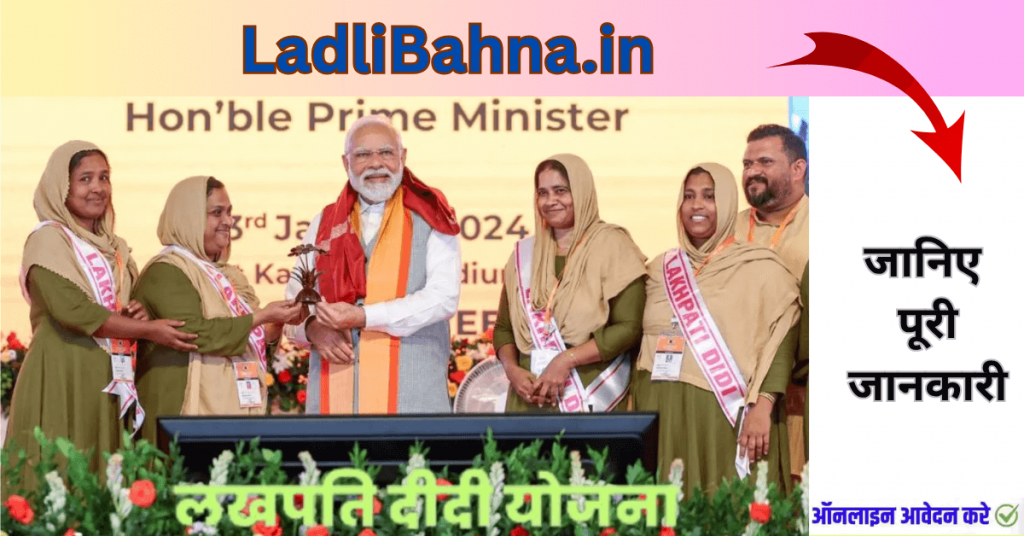The Lakhpati Didi Yojana, launched by the Government of India, stands as a testament to the power of women’s entrepreneurship, self-reliance, and grassroots development. The scheme, aimed at empowering rural women through economic independence, has not only uplifted individual households but is also transforming entire communities.
What is Lakhpati Didi Yojana?
The Lakhpati Didi Yojana was introduced under the umbrella of the Deendayal Antyodaya Yojana – National Rural Livelihoods Mission (DAY-NRLM). Its core objective is to enable rural women to become economically empowered by helping them earn at least ₹1 lakh per year—thus, the term “Lakhpati Didi” (a woman earning ₹1 lakh annually).
The scheme encourages women to become part of Self-Help Groups (SHGs) and engage in sustainable income-generating activities. Through skill training, access to micro-credit, market linkage, and business development support, the government aims to build a network of over 2 crore Lakhpati Didis by 2030.
The Vision Behind the Initiative
Prime Minister Narendra Modi emphasized the importance of this initiative in his Independence Day speech in 2023, stating that economic empowerment of women is central to India’s development. By focusing on rural women, the government intends to reduce poverty, enhance dignity, and foster inclusive growth.
Rural women are often at the heart of agriculture, animal husbandry, food processing, handicrafts, and local services. However, despite their contributions, they face systemic challenges—lack of formal employment, limited access to credit, and insufficient training. The Lakhpati Didi Yojana seeks to break these barriers by equipping them with skills and entrepreneurial tools.
Key Features of Lakhpati Didi Yojana
- Skill Development
Women are trained in various trades such as organic farming, tailoring, bee-keeping, poultry farming, handicrafts, food processing, digital services, and more. These are chosen based on local resources, market demand, and individual interests. - Financial Assistance and Credit Linkage
Beneficiaries are provided access to micro-loans and subsidies through SHGs. The government facilitates linkages with banks and financial institutions for easy credit, often without collateral. - Market Linkages
Women are connected with digital and physical marketplaces to sell their products. Initiatives like e-commerce platforms, SHG haats (markets), and government exhibitions help women find buyers for their products. - Mentoring and Handholding Support
SHGs are supported by trained community resource persons, NGOs, and government agencies. Continuous mentoring ensures sustainability and scalability of income-generating activities. - Inclusivity and Grassroots Focus
Special efforts are made to reach the poorest of the poor, tribal women, and women in remote regions. The program is adaptable to local conditions, making it effective across diverse geographies.

Real-Life Impact: Stories of Change
Across states like Jharkhand, Uttar Pradesh, Bihar, Chhattisgarh, and Madhya Pradesh, thousands of women have already begun transforming their lives.
In Jharkhand, the scheme has become a flagship success. Women have taken up mushroom farming, soap-making, and textile crafts. SHGs have collectively built mini-enterprises and increased family incomes. For example, Savitri Devi, a member of an SHG in Palamu district, now earns over ₹10,000 a month through goat farming, something she had never imagined before.
Similarly, in Uttar Pradesh, Rekha Singh started a tailoring unit with the help of her SHG and now employs four other women from her village. Her success story is being used as a model in other blocks of the state.
Challenges and the Road Ahead
While the Lakhpati Didi Yojana has immense potential, several challenges persist:
- Awareness among rural women about the scheme remains low in some areas.
- Access to credit, though improving, can be slow due to bureaucratic hurdles.
- Market access needs to be more robust and less dependent on intermediaries.
To overcome these, there is a need for stronger coordination between state governments, NGOs, and local panchayats. Digitization of SHGs, mobile-based training, and better integration with startup ecosystems can further accelerate growth.
Conclusion
The Lakhpati Didi Yojana is more than just a financial program—it’s a movement towards social equity, gender justice, and rural development. By equipping women with skills, confidence, and income, the scheme fosters self-reliance and resilience. As India moves forward on its developmental path, empowering the “Didis” of rural India could very well be the cornerstone of the nation’s inclusive economic success.
Leave a Comment